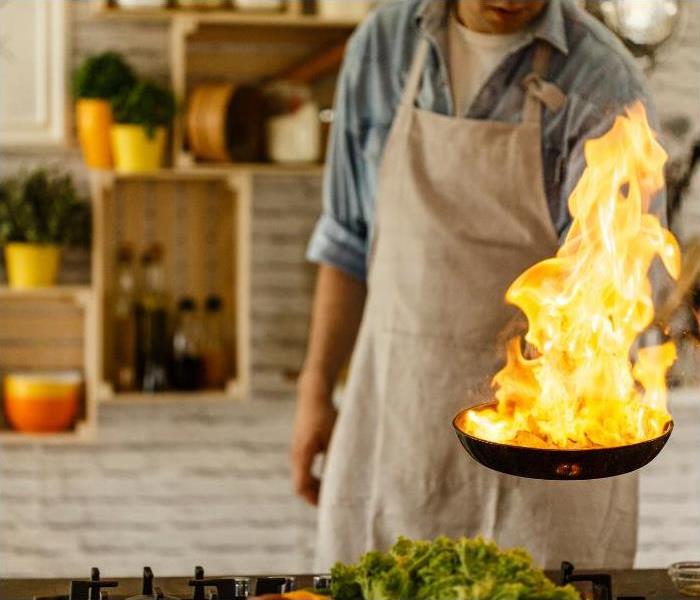With These Tips, You Can Avoid a Fire in Your Commercial Kitchen
2/21/2022 (Permalink)
If you operate a restaurant, bar, or commercial kitchen in Toombs Central, GA, or Vidalia, GA, it is critical to reduce fire danger. In 2017 alone, according to the National Fire Protection Association (NFPA), fire departments responded to over 7,410 building fires caused by kitchens in restaurants and bars. Commercial kitchens suffer annual losses of $165 million in property damage and an average of three deaths as a result of kitchen fires that are typically preventable. These suggestions can help you and your staff stay safe while avoiding fire code infractions that might cause shutdowns.
What Are the Ducting and Air Movement Criteria for Fire Prevention?
The NFPA 96 Standard for Ventilation Control and Fire Protection of Commercial Cooking Operations' Chapter 7, which is dedicated to ventilation control and fire protection, covers all of this in detail. Keep the following points in mind as well:
Commercial kitchen ducts should never share an exhaust system with the structure's ventilation or have obstructed access panels. While avoiding these measures might save money in the short term, the fire risk rises significantly. If you do not pay attention to this, your commercial kitchen work will most likely not be accepted at inspection.
At least 18 inches away from the kitchen ducts, keep combustible materials away. This is based on Section 4.2 of the NFPA 96. It's easy to overlook this once the kitchen is in use. Ducts also produce a lot of radiant heat, which might cause flammable materials like boxes or cups to catch fire.
If you want to learn more about the many sorts of combustible and non-combustible materials that should or should not be kept near a duct, look into NFPA Chapter 3.
What Are My Commercial Kitchen Fire Extinguisher Requirements?
"The NFPA 96 requires automated fire suppression equipment for all grease removal devices, hood exhaust plenums, and exhaust duct systems in a commercial kitchen, as well as any cooking equipment that produces grease-laden vapors." - Koorsen Fire & Security
The NFPA 96 says that Class K fire extinguishers should be used in combination with automatic fire-extinguishing systems. These extinguishers are also marked with warning signs that identify their class. Portable extinguishers should not be used to put out kitchen fires in commercial buildings unless the automatic fire-extinguishing system has been turned on. This is because high-efficiency cooking equipment can reach high temperatures, which can turn vegetable oils into dangerous flammable fuels. When oil ignites at these high temperatures, it's often already too hot for a portable extinguisher to handle.
Another standard that you should familiarize yourself with is the UL 300 standard.
According to this article by Insureon, a kitchen's cooking equipment must meet the following UL 300 standards:
The hood, ducts, and above each cooking appliance must have fire-extinguishing nozzles. Both gas and electric power sources must have an automatic fuel shut-off option. For all power sources, a manual fuel shut-off button must be provided. A wet-chemical fire-extinguishing system must meet UL 300 criteria - one of which is undergoing semiannual checkups by a certified professional.
If you need immediate assistance after a fire, our teams are available 24/7/365. With our promise of being Faster to Any Size Disaster, you can count on SERVPRO of Dublin/Vidalia/Claxton to be there when it counts. Call us today at (912) 538-1323 for rapid assistance.



 24/7 Emergency Service
24/7 Emergency Service
